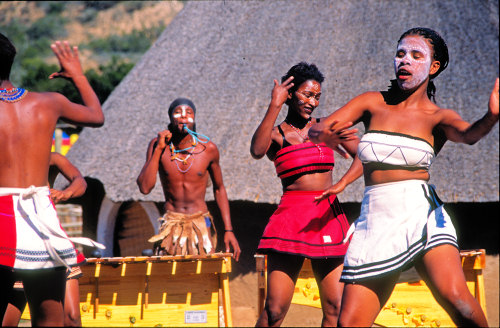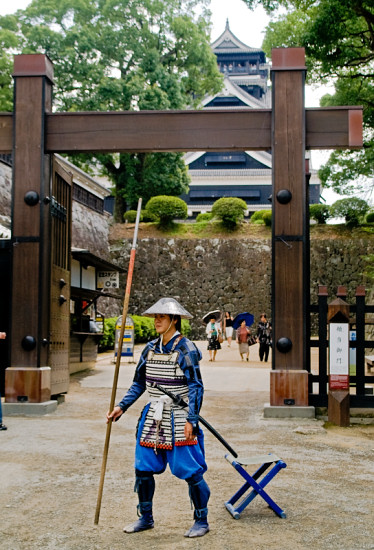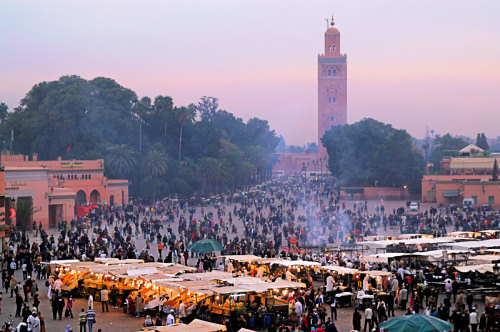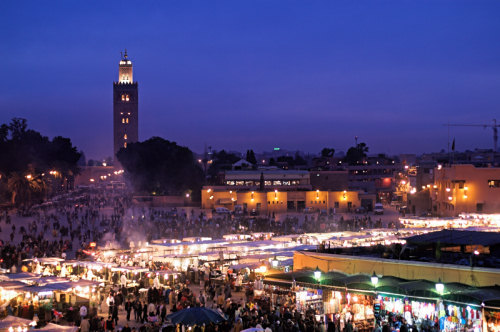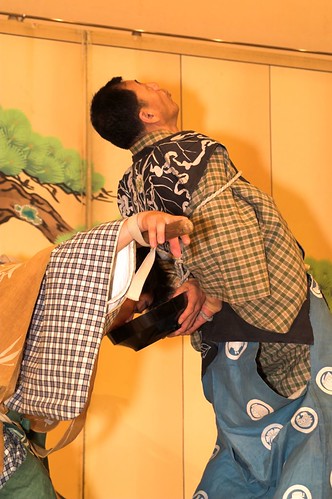
A Gamelan orchestra performing in Ubud, Bali.
For ears used to European classical music, this sounds very strange and noisy, but the atmosphere of such a performance is truly unique.
January 26, 2008
January 20, 2008
Gamelan Music
January 17, 2008
May 22, 2007
Suzhou Street
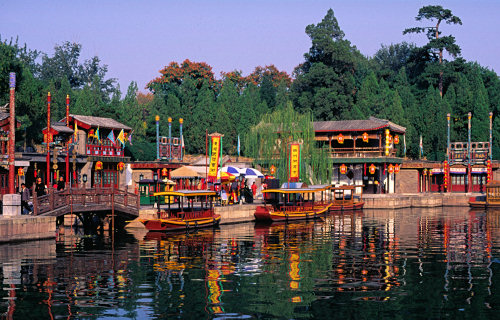
An ancient picturesque “shopping mall” for the imperial household.
Today, you can see only tourists instead of the empress and the imperial concubines - but then who would have had the privilege to see this in the 18th century?
This is one of the major attractions of the Summer Palace where you can easily spend a whole day…
March 23, 2007
Nubian Museum at Night
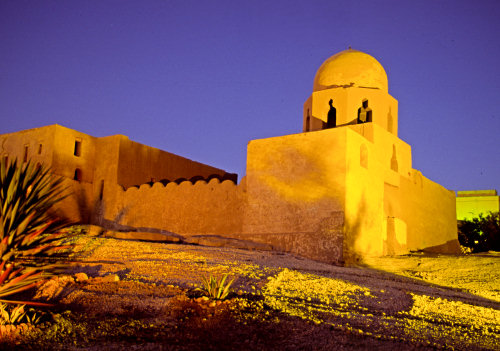
The Nubian museum in Aswan is one of the most interesting museums I have visited -much more inspiring than the famous, crammed Egyptian museum in Cairo.
Here, all items are shown in the best light - very similar to the equally beautiful Luxor museum.
Outside the museum itself, there are some traditional buildings to be seen, like the small mosque on the picture.
Wandering around the compounds at night is an almost magical experience.
January 28, 2007
Inner sanctuary, Abu Simbel
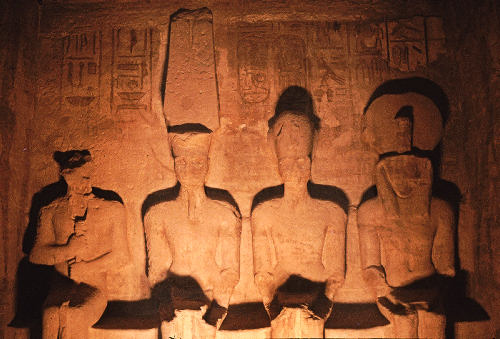
When I last visited Anu Simbel in 2004, it was imposible to take photos of the inner sanctuary.
Fortunately, I had already done so 12 years earlier.
In the sanctuary there four seated statues of Amun, Ra-Harakhty, Ptah, and Ramesses.
The temple was constructed in such a way that the sun shines directly on 3 of the statues during two days of the year only the statue of Ptah - the god of darkness - remains in the shadow.
More pictures from Abu Simbel.
January 13, 2007
Red, blue and black: evening in Marrakesh (Place Jemaa el Fna)

click on the pictures to see a larger version.
I was fortunate enough to get a table with an excellent view of Marrakesh’s main square on the evening before my flight back to Germany.
The sunset itself was not spectacular, but seeing the lively Place Jemaa el Fna and the spire of the Kotoubia Mosque under a rapidly changing sky was truly beautiful.
The square itself is already quite lively during day time and offers many attractions: there are many fruit stalls, musicians, magicians, tea vendors and artisans.
When night falls, however, it becomes even busier: there are long rows of food stall catering to tourists as well as the local population and Many people are passing through on their way to the extensive souks surrounding the square.
On the photos you can see the smoke rise from hundreds of grills.
Wikipedia told me that the name comes from the Arabic for “Assembly of the dead” and indeed, the heads of many executed people were on display here in ancient times.
Today, it is hard to imagine a livelier spot…
I very much enjoy looking at other people’s impressions of the same locations I visited, here are some I found interesting:
http://yourinnervagabond.com/blog//?p=122
http://www.evete.com/morocco2007/2006/09/djemaa_el_fna_s.html
http://blog.flickr.com/flickrblog/2006/08/oj_stand_on_jam.html
http://photosdumaroc.net/
January 7, 2007
Green tea in the Garden
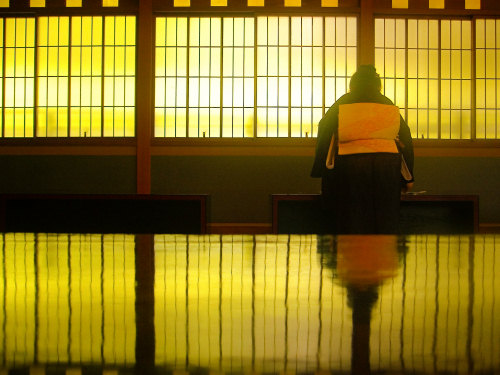
Not a full-fledged tea-ceremony - but still a very meditative process: with her back to us, a woman prepares two cups of green macha tea in Tokyos Shinjuku Gyoen Park.
Her silhouette is reflected on the lacquer wood of the table.
More on Shinjuku Gyoen Park at Wikipedia.
August 24, 2006
Japanese Theatre: “Kyougen play”
This is a scene from a funny “Kyougen” play: distrusting his servants, the a master binds them before leaving the house.
However, even bound, they find a way to get to the master’s sake provisions and drink from it.
Gion Corner in Kyoto presents short snippets of Japanese arts including various styles of theatre, the tea ceremony and the art of flower arrangement.
All this is quite touristy, but still fun and a good way to get some fascinating shots (you can even use flash throghout the performance).
March 5, 2006
Carnival Procession in Santa Cruz
Due to bad weather the main carnival event had to be postponed.
So the procession in Santa Cruz took place in the evening which completely changed the atmosphere.
I had the chance to see the other big corso in Puerto de La Cruz today (in broad daylight) - photos from that event later…
December 26, 2004
Sillustani Chullpas
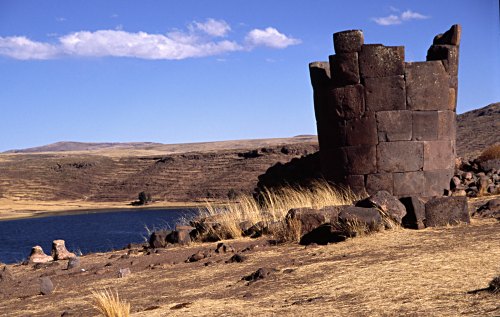
Sillustani is famous for its Chulpas - the ancient Indian burial towers.
December 5, 2004
Nazca lines - Colibri
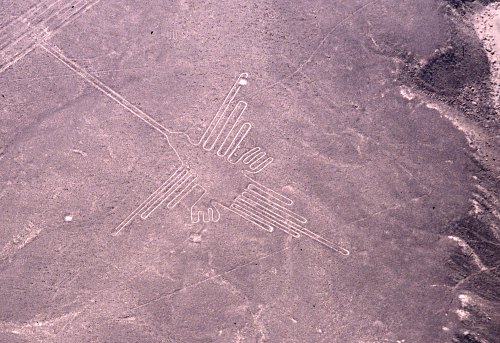
There are many theories regarding the purpose of these lines. Were they built for the gods to see? Or for shamans who “flew” over them in drug induced dreams?
Or did their creators already have means to actually leave the ground, such as balloons?
In any case, from the ground there hardly is anything to see: the area is mostly flat and the figures are of a size that makes it impossible to see them whole from this perspective.
From an airplane, however, they are clearly distinguishable. There are a monkey, a spider, a colibri, even a human figure (often called the “astronaut”).
Of course, over time, erosion must have taken a toll on the lines which are believed to be more than 2000 years old.
By the way, while the lines at Nazca are the most famous ones, there are others in South America, such as the Atacama Giant in Chile, which can be clearly seen from the ground.
According to a CNN report, many new, even bigger and older geoglyphs have been found near Paracas - actually quite close to the Nazca lines.
More:
National Geographic on the Nazca lines: “Ancient, Giant Images Found Carved Into Peru Desert“.
Here is an interesting account by someone who visited the Nazca lines several months before me.
A Spanish blog notes that the lines have now been recorded digitally - a way to preserve them for the foreseeable future and maybe the analysis of the data will yield further insights?!
December 4, 2004
Reed Boat, Uros Islands, Lago Titicaca (Peru)
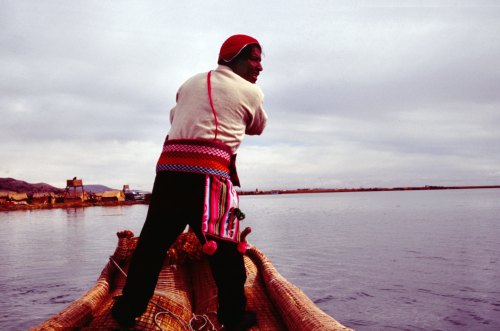
One of the “must sees” on Lago Titicaca are the artificial “islands of the Uros”, made of marsh reeds (totora).
The tradition of constructing such islands dates back to times well before the Inca empire.
The original inhabitants were believed to have black blood and other magical qualities.
When they started to mix with the neighbouring Aymara tribes, however, they were no longer regarded with awe.
Today, the inhabitants of the floating islands no longer are Uros but people from other Indian cultures who speak Aymara or Quechua.
The totora reeds are also used to produce boats such as the one sown on this picture.
The famous Norwegian adventurer/anthropologist Thor Heyerdahl asked Uros from Lago Titicaca to help him with the construction of his reed boat Ra II with which he eventually crossed the Atlantic Ocean.
Although many boats are obviously mainly constructed for the entertainment of the tourist crowds, you can still see many families use them as the traditional means of transport.
By the way: I also saw floating islands in Xochimilco, Mexico.
October 15, 2004
October 9, 2004
A Kyoto Theatre
Visiting a theatre performance can be quite an experience - especially if this takes place in another culture.
I’ll never forget this performance in Kyoto - the colourful costumes, the light, the traditional music.
The short piece here is about a Koi (goldfish) and a crane.
September 27, 2004
Street scene in Guatemala

Maya culture still is very much alive around Lago Atitlan (Guatemala).
September 8, 2004
Atacama Giant
In the Peruvian and Chilean desert, there are numerous, gigantic drawings made by carefully moving aside the dark pebbles thereby exposing the brighter soil underneath.
The most famous examples of this technique are the so-called “geoglyphs” in Nazca Peru.
As the area is mostly flat, these can only be appreciated from a plane!
Did their builders already have the technology to take to air either with a balloon as some believe or even using alien technology as others imply? Or were the images only supposed to be seen by the gods or shamans who could “leave their body” in a state of trance to “fly” over them?
(Personally, I wonder why the drawings are often very crude - if they were produced by aliens capable of interstella travel, it must have been their pre-school children who drew them!).
A slightly less famous (and less enigmatic) specimen is the so-called “Atacama Giant” in the Chilean Atacama desert: this figure is 115 m tall, but can be viewed quite well without leaving the ground as it takes up the slope of a hill.
If the photos fom my Peru travel turn out well, I may be able to post pictures of the Nazca lines as well, - which actually are quite different in style.
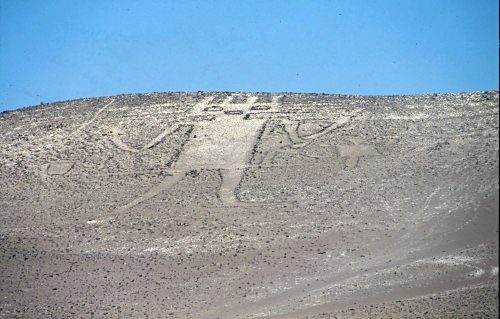
July 24, 2004
Shinto Shrine
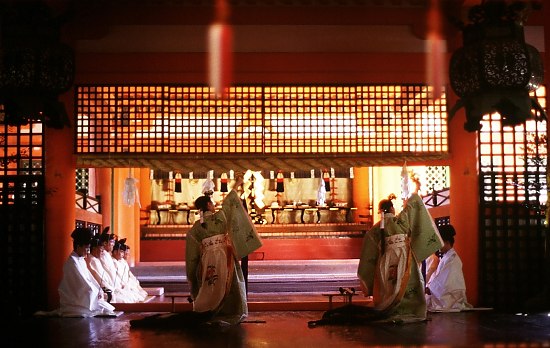
Shinto shrine in Miyajima. The ceremony performed there was solemn and impressive - although I didn’t understand it at all…
April 30, 2004
April 16, 2004
April 11, 2004
Thailand: Bounty and Wisdom

Untouched by the splendour of the ornaments, a stone Buddha sits in Bangkok, Thailand.
February 29, 2004
February 28, 2004
Palace of Fine Arts

Somewhat anachronistic - and one of the most romatic spots in San Francisco.
February 27, 2004
February 3, 2004
Japanese Tea Ceremony

What is the real purpose of the Tea Ceremony? Philosophy? Zen? The perfect cup of tea?
Well, I would guess that, today, the answer is simple: money.
The event no longer takes place in a small garden house but in theatre-style halls.
Even so, one shouldn’t miss the opportunity to attend such a ceremony. It’s beautiful.
And you even can take photographs, which would not exactly be compatible with the traditions of Cha-Do - the way of tea.
January 31, 2004
Images of Asia: Japan.

I’m going to post some pictures from Japan in this Weblog, in addition to this, here’s my Japan photo gallery .
January 30, 2004
Malta: Dramatic Silhouettes
Actually, it is quite easy to take pictures of dramatic silhouettes: you shoot into the sun, metering on a lighter part of the sky. Consequently, the foreground will be dark or even black.
Getting the exposure right is pretty simple with spot metering (if your camera has this option).
Still bracketing (taking pictures with different exposures) is highly recommended, - at least when you are using slide film.
Sometimes, you want to have a nice silhouette in the centre or background, but would like to show the details in the foreground. In this case, it is advisable to use the above technique combined with a fill flash.
Here is an example, the Ggantija Temple on Gozo (Malta). The place is 6000 years old!
Other pictures I took showed much more detail but failed to capture the magic atmosphere.

Other examples: Sunset in Glasgow or sunrise in the Himalayas.
More photo-tips.
January 25, 2004
China-Photos
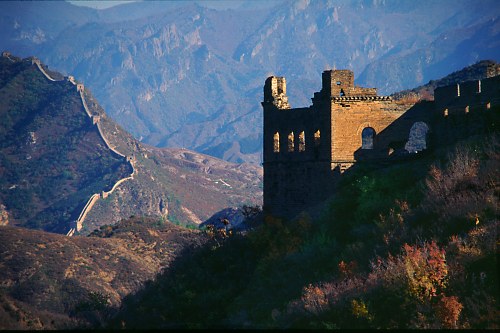
Hundreds of photos from China at China.Travelphoto.Net
There are many pictures of Beijing, the Great wall, Xi’An and the famous three gorges.
January 24, 2004
Emirates: Mosque

A stopover in Bahrain was a good opportunity to visit the city. This is a mosque in the blue hour.
